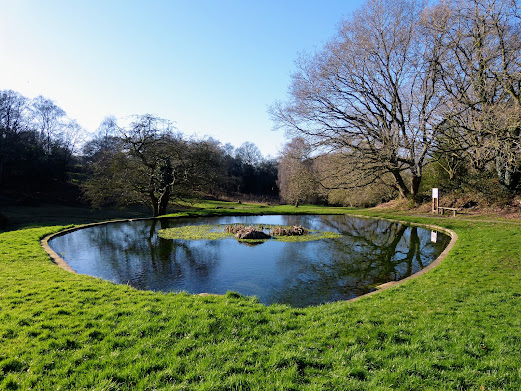Thursday 15th February 2024.
My itinerary today was Titchwell RSPB Reserve, the ‘flagship’ of the RSPB, where we spent the best part of 3 hours enjoying what this cracking Reserve had to offer. Though I picked up another ‘year-tick’ today by picking out a Spotted Redshank among the many Redshank (easy if you know how), I would have considered the trip a relatively quiet one. But hey, the reserve still had so much to offer and with more time, I probably would have seen a lot more, but I was pleased about today as the weather was kind to us again (still a balmy 15 degrees! One birder was in a t-shirt!!). Judging by all the ‘old’ people getting out of their cars or slowly walking to the reserve entrance, I suddenly realised that wait a minute…... .I'm old too! I still think I am 30 inside my head! Sob!
The 24 mile trip from Holt to this reserve notched up sightings of Red Kites (including two on the ground eating a carcass!), Kestrel, Red-legged Partridge and Buzzards; but there was an awful lot of roadkill around. A lot of the main roads are straight and you can do 60 mph along them and at night, I expect a lot of speeding traffic will go in excess of that limit. It got actually brighter by the time we got to the Reserve and it has changed a bit since I was here two years ago. There are no parking meters, though you have to pay or show your RSPB Membership cards when walking through a very large shed-like building, where we were warmly greeted by the staff. On the way there, a sign pointed out Scarlet Dwarf Cup and Candlesnuff Fungus was around and sure enough, there was plenty of the former but I could not find any of the latter by the footpath. Long-tailed Tits were by the nearby feeders, showing nicely going about their business and Chaffinches were also seen using the feeders.
Because we had our dogs with us, on a lead at all times, we had to keep to the West Bank footpath where we took our time (Becky cannot walk fast), enjoying the Marsh Harriers over the Saltmarsh and the waders on the small pools (Curlew, Redshank and Snipe) and on the pools, ‘mewing’ Mediterranean Gulls mixed in with the Black-headed Gulls overhead or settled on the islands along with many Avocets. There was a lot of work going on here by the RSPB staff, with both new trenches and pipework going in so they can regulate the water level here and some burning of old reeds in the distance, with a plume of smoke heading north over the reserve. But the birds didn't seem to mind it, though I thought numbers of birds here were relatively lower than normal?
As we made our way to the beach, a few Reed Buntings and both Meadow and Rock Pipit were seen. There was a report of a Water Pipit here, but I did not see it; but I had better luck when I found the wintering Spotted Redshank that was wading along the creek north of the Parrinder Hide. This was my first of the year, but it was a bit distant and the photos I took really didn't do it justice. I helped out some ‘newbie’ birders in identifying a flock of Linnets near an old Blockhouse just before the sand dunes and among them were several Skylarks to confuse them even more.
I joined around a dozen or so birders looking out to sea through their scopes and picked out at least 8 Common Scoter, a pair of Mergansers and 4 Great Crested Grebes on the sea. A few Sanderling flew past and three Turnstone came in to land near our feet, but quickly flew off again. After 15 minutes or so, we slowly made our way back for a bite to eat and a drink back at the Shop and Cafe. A nice male Reed Bunting was perched on some Sueda and began singing and looked pretty bonnie in its near Spring plumage. Sitting on one of the benches, one of the Avocets came in very close to where we sat (see film footage), totally oblivious of our presence here. A large flock of both Grey Lag and Brent Geese were seen this morning here, but no sign of any other Geese bar the lone Egyptian Goose that flew low over our heads. My dogs behaved impeccably all the time we were there and they even got a bit of my Sausage Roll. That was a pleasant walk this morning and I am glad I came back to this lovely reserve. Good times indeed.
In our stretch of North Norfolk today, yet again, the Black Scoter was seen at Holkham Gap along with the 13 Shorelarks. A Glossy Ibis was reported at the Stiffkey Floods and the Russian White-fronted Geese were again seen by the A149 layby on Holkham Freshmarsh. We looked yesterday from the same layby, but drew a blank!
























































